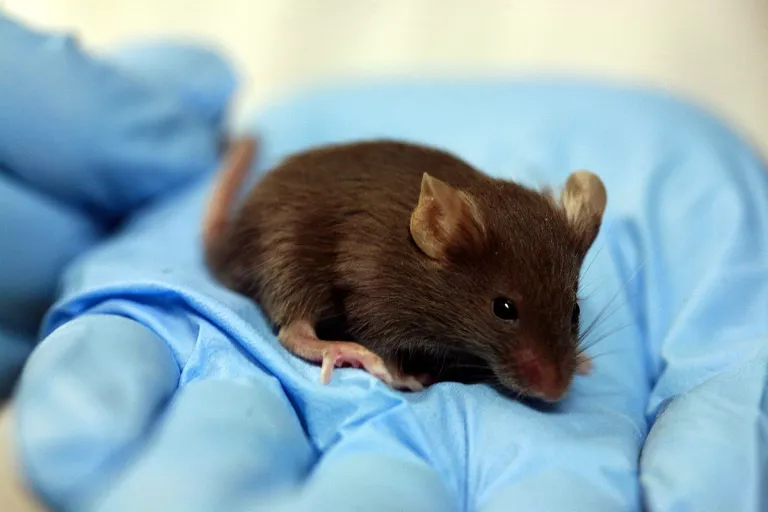Written by Dr. Ronald Buijsen Edited by Dr. Larissa Nitschke
O’Callaghan and colleagues show that novel therapeutic approaches to reduce the disease-causing protein in SCA1 do not increase the risk of developing cancer or Alzheimer’s disease in SCA1 mice.
People affected with Spinocerebellar Ataxia type 1 or SCA1 carry an expansion of a repetitive stretch of DNA in the ATXN1 gene. The expanded ATXN1 gene encodes an expanded ataxin-1 protein, which accumulates and causes toxicity in the brain. This causes motor coordination problems and premature lethality. So far, there is no treatment that slows, stops, or reverses SCA1 disease progression.
Still, several preclinical studies demonstrated that reducing ataxin-1 protein levels can improve the motor coordination deficits in SCA1 mouse models. One strategy to reduce ataxin-1 levels is the use of antisense oligonucleotides (ASO). These ASO treatments specifically cleave Atxn1 mRNA and lower ataxin-1 protein levels.
This study, published by the group of Dr. Harry Orr in 2018, showed that injection of ASOs into the brain of SCA1 mice improves motor deficits, prolonged survival, and reversed neurochemical abnormalities. However, lowering ataxin-1 protein levels might lead to altered expression of other proteins in the brain. This could impact the safety of this treatment strategy. Therefore, this follow-up study investigated whether lowering of ataxin-1 protein levels results in unwanted effects.

For genes in the DNA to encode for protein molecules, first, a working copy, the so-called messenger RNA, or mRNA, is made. ASO-mediated therapies as used in this study can target and destroy these mRNA molecules. Since the generation of mRNA is a continuous process in human cells, repeated injections of ASOs are needed to cause a prolonged reduction of the protein.
Thus, in this study, the authors changed the single ASO injection protocol used in the previous study to a multiple ASO injection strategy to reduce ataxin-1 levels. The authors injected the ASOs that target Atxn1 mRNA into the brain of SCA1 mice at 5, 13, and 21 weeks of age and sacrificed the animals at 26 weeks. The ASO treatment reduced ataxin-1 protein levels in multiple brain regions. Moreover, three injections of the ASO stabilized motor performance and improved life span. But it didn’t improve the failure to gain weight in SCA1 mice. Altogether, these data showed that this injection protocol is suitable to further assess the safety of an ASO-mediated lowering of ataxin-1.
Next the researchers wanted to check if the loss or a reduction of ataxin-1 protein levels could also affect the levels of other proteins in the brain. To do this, they studied possible undesirable effects of the ASO treatment that might impact the safety of this therapeutic approach.
Previous studies found that ataxin-1 interacts and forms a complex with another protein called Capicua (CIC). Together, ataxin-1 and CIC play a role in how a cell regulates the conversion of DNA to mRNA. CIC is involved in multiple biological processes, including autoimmunity, neurobehavioral processes, and most importantly for this study, tumor suppression. A loss of CIC is associated with an enhanced risk for cancer. For this reason, one concern was that the reduction of ataxin-1 could also affect the expression of genes involved in cancer. The authors showed that in the tested brain regions, no CIC-regulated genes involved in cancer were altered. This indicates that reducing ataxin-1 levels in adult mice likely does not affect CIC’s tumor suppressor function.
Other studies also showed that loss of ataxin-1 leads to an increase in another protein called β-secretase 1 (BACE1). Evidence in the scientific literature suggests a strong association between BACE1 and Alzheimer’s Disease. Here, the authors show that BACE1 is not dysregulated in any of the investigated brain regions upon ASO treatment. This shows that lowering of ataxin-1 in adult mice does not increase BACE1 levels. Thus, it is likely not increasing the risk of developing Alzheimer’s disease.
The hippocampus is an important part of the brain involved in emotions, learning, and memory formation. Loss of ataxin-1 was shown to reduce hippocampal neurogenesis, a process by which new brain cells are formed. Interestingly, previous studies found that SCA1 mice also display reduced neurogenesis in the hippocampus. Thus, one last concern was that reducing ataxin-1 levels in SCA1 mice could even further reduce hippocampal neurogenesis. Instead, the authors showed that lowering ataxin-1 protein levels by ASO treatment restores the level of neurogenesis in the hippocampus.
Altogether these results support the concept that the unwanted effects of a partial loss of function by protein lowering strategies are minor compared to the complete loss of a protein during embryonal development and throughout life. These data support the safety of ASO-mediated approaches and other ataxin-1 reducing therapeutic intervention strategies to treat SCA1.
Key Terms
ASOs (antisense oligonucleotides): Antisense Oligonucleotides are small molecules that can be used to prevent (or alter) the production of proteins.
Mouse Model: A type of animal model with specific characteristics that allow for the study of various aspects of a human disease/condition.
RNA: Ribonucleic acid. This molecule copies the information encoded in genes (which are made of DNA) and functions as a blueprint for making proteins in a cell.
Conflict of Interest Statement
The author and editor declare no conflict of interest.
Citation of Article Reviewed
O’Callaghan B, Hofstra B, Handler HP, et al. Antisense Oligonucleotide Therapeutic Approach for Suppression of Ataxin-1 Expression: A Safety Assessment. Mol Ther Nucleic Acids. 2020;21:1006-1016. doi:10.1016/j.omtn.2020.07.030. (https://www.ncbi.nlm.nih.gov/pmc/articles/PMC7452125/)










